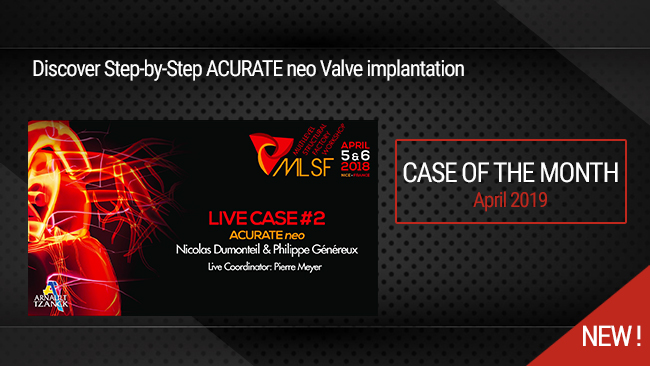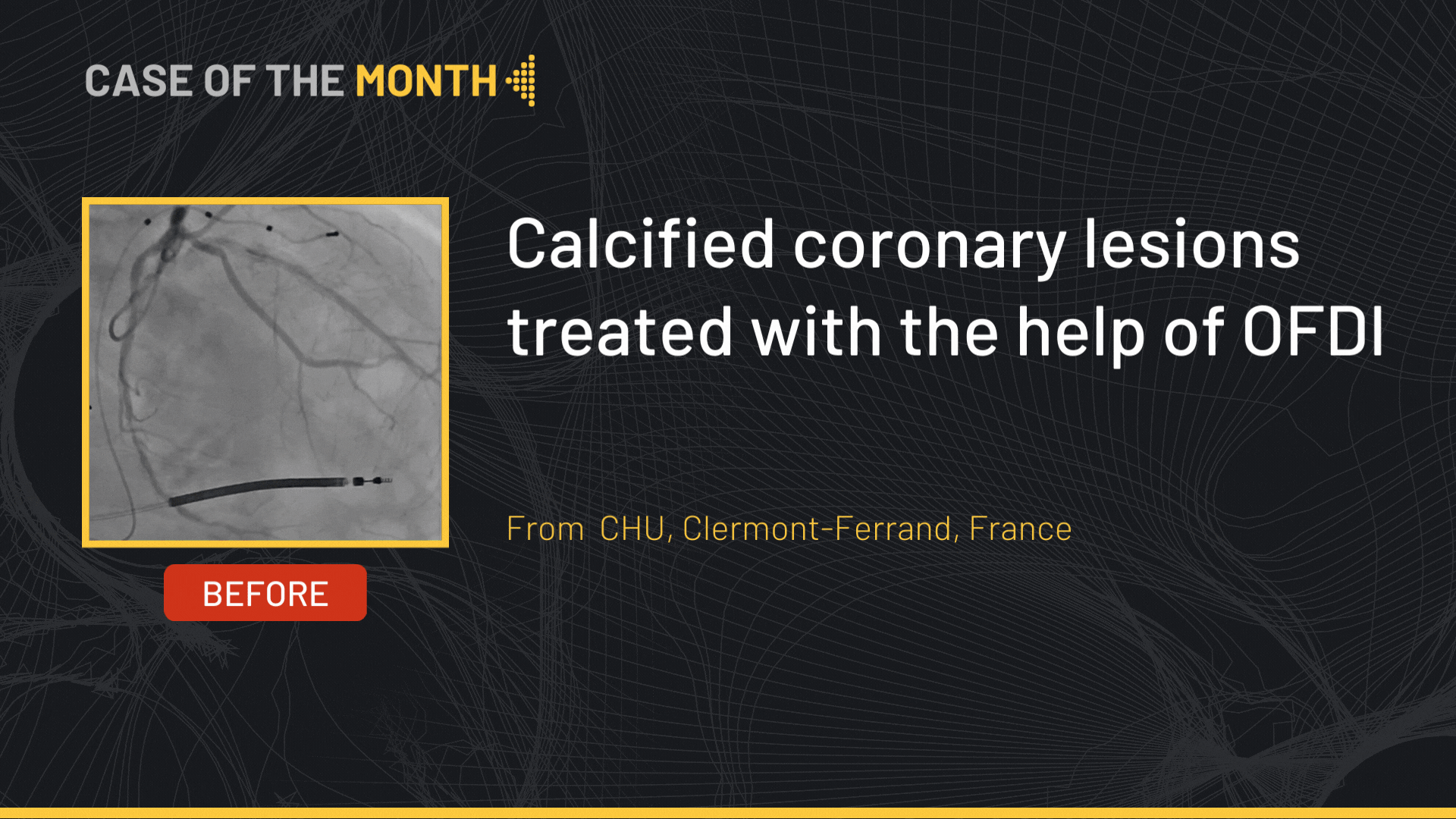×
It looks like you're using an obsolete version of internet explorer. Internet explorer is no longer supported by Microsoft since the end of 2015. We invite you to use a newer browser such as Firefox, Google Chrome or Microsoft Edge.
Step-by-Step ACURATE neo Valve implantation
Case of the month: April 2019
This didactic procedure concerns 88 y.o man in good general conditions, presenting Asymptomatic severe Aortic stenosis.
He was successfully treated with transfemoral TAVI using and implantation of ACURATE neo (Boston Scientific) self-expandable Valve.
Educational objectives
- How to manage parients with severe valvular Aortic stenosis.
- How to plan & proceed with TAVI intervention.
- Tips & Tricks on vascular Access for TAVI.
- Set Up for Rapid Pacing over the guidewire.
- When & How to predilate Aortic Valve before prosthesis implantation.
- How to make Balloon sizing for predilatation.
- Different Landmarks & Targets to know during Acurate neo Valve implantation.
- Step-by-Step Optimal implnatation technique.
Step-by-Step Pocedure
- Ultrasound Left Common Femoral Artery puncture.
- Right Common Femoral Artery puncture using Cross-over guidewire as Landmark.
- Preclosing the right Femoral Arterial Acces with two Proglides.
- 14F Sheath insertion in the Right Femoral Access.
- Annulus Sizing & Valve Selection.
- Pigtail 5F catheter insertion for hemodynamic Monitoring.
- Valve crossing with JR4 catheter & Floppy 0.035" guidewire.
- Exchange of the JR catheter to a Pigtail 5F catheter over 0.035 " guidewire.
- SAFARI (Boston Scientific) 0.038 guidewire insertion over the Pigtail catheter.
- Working Projection Choice LAO 11° CAU 7°.
- Setting-up the System for RAPID pacing through the Guidewire.
- Predilatation with Crista Balloon 18mm (abmedica) under rapid pacing,aniographic control.
- Insertion of the Accurate Valve (Boston Scientific).
- Identifying different Valve components on fluoroscopy.
- Valve optimal positioning.
- Step-by-Step valve release.
- Final Hemodynamic & Angiographic controls.
- Arterial Access closure.
Biobliography
-
2017 ESC/EACTS Guidelines for the management of valvular heart disease - Guidelines
Authors:Helmut Baumgartner Volkmar Falk Jeroen J Bax Michele De Bonis
Publication:European Heart Journal, Volume 38, Issue 36, 21 September 2017, Pages 2739–2791,
-
Acurate neo and Evolut PRO in the NEOPRO Registry: Adding Another String to the Bow? - Article
Authors:Modine T, Overtchouk P.
Publication:DOI: 10.1016/j.jcin.2018.12.033
-
Transcatheter Aortic Valve Replacement With Next-Generation Self-Expanding Devices: A Multicenter, Retrospective, Propensity-Matched Comparison of Evolut PRO Versus Acurate neo Transcatheter Heart Valves -Article
Authors:Pagnesi M, Kim WK, Conradi L, Barbanti M
Publication:2019 Mar 11;12(5):433-443. doi: 10.1016/j.jcin.2018.11.036.
-
One-year clinical outcome with a novel self-expanding transcatheter heart valve. - Article
Authors:Pellegrini C, Rheude T, Trenkwalder T
Publication:2019 Feb 24. doi: 10.1002/ccd.28144.
-
Transcatheter aortic valve replacement with new-generation devices: A systematic review and meta-analysis - Article
Authors:Barbanti M, Buccheri S, Rodés-Cabau J, Gulino S, Généreux P
Publication: 2017 Oct 15;245:83-89. doi: 10.1016/j.ijcard.2017.07.083. Epub 2017 Jul 25.


